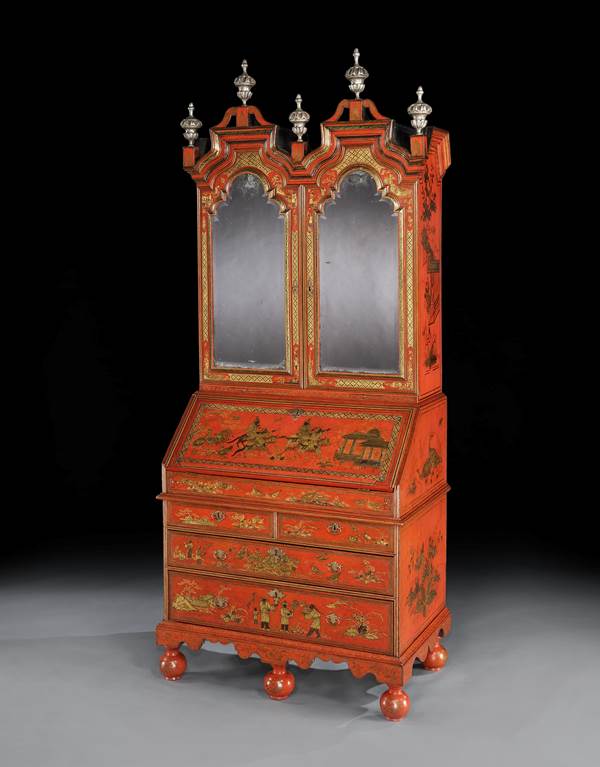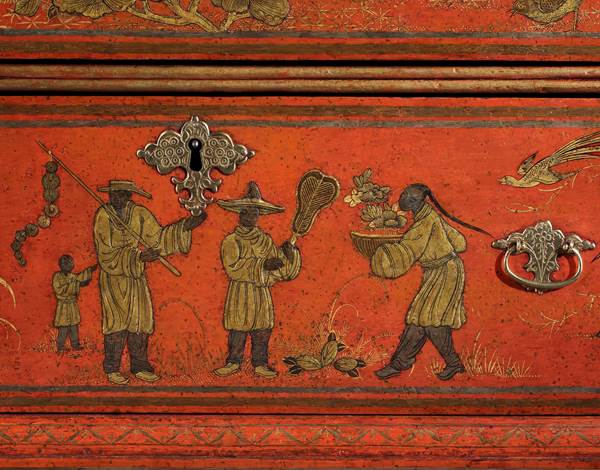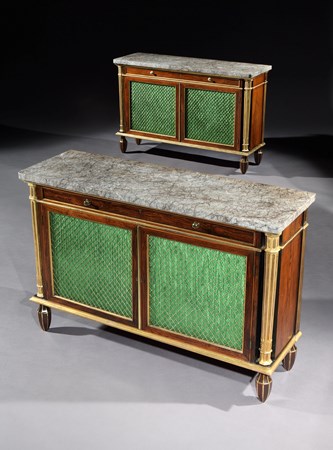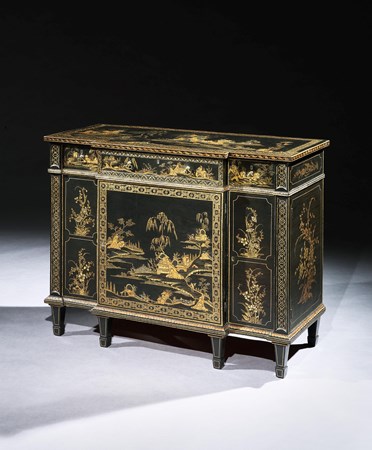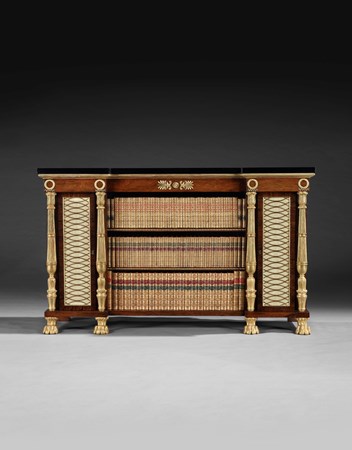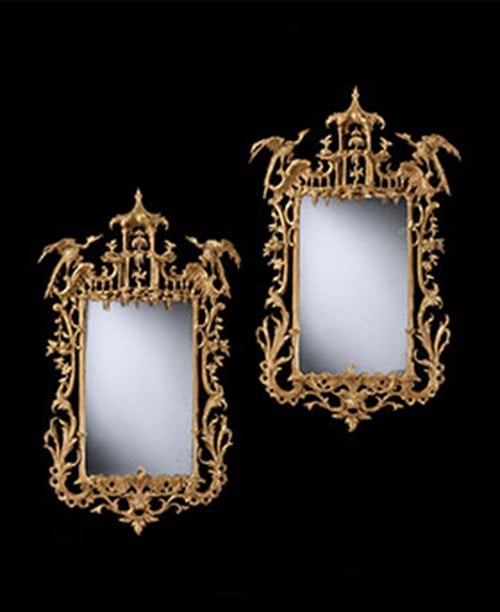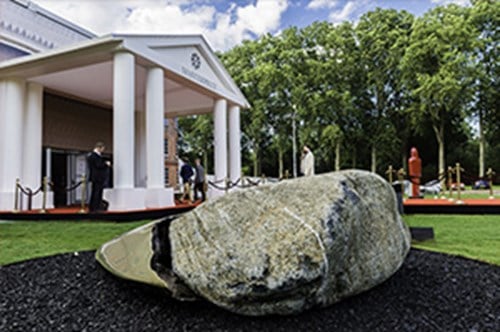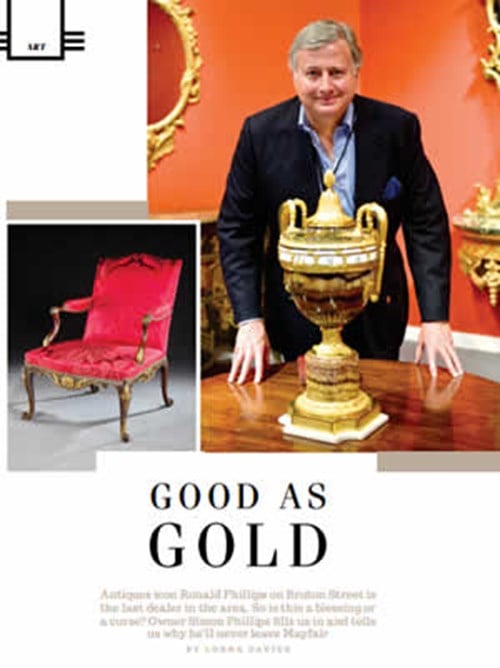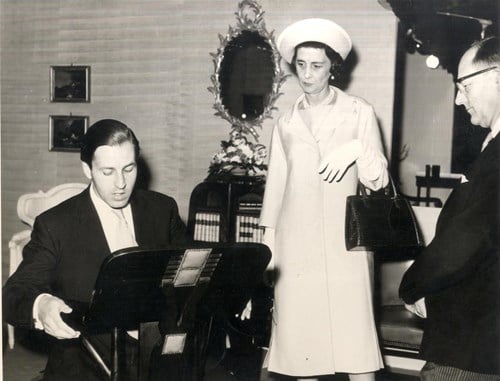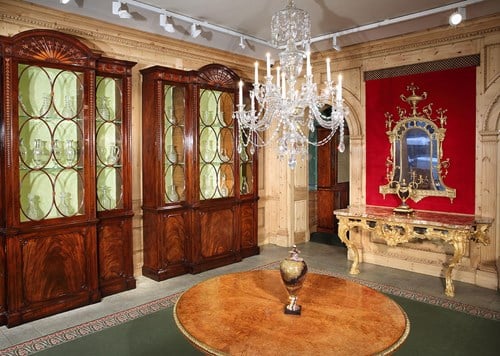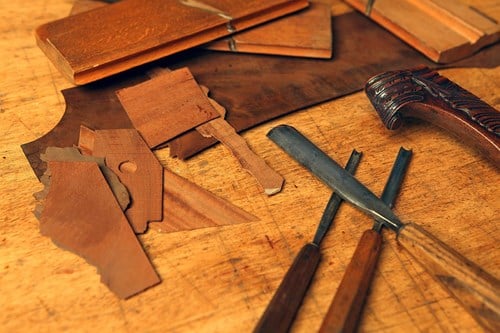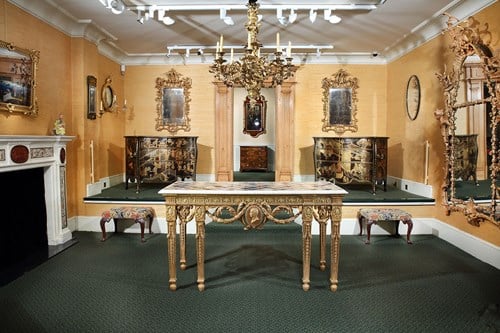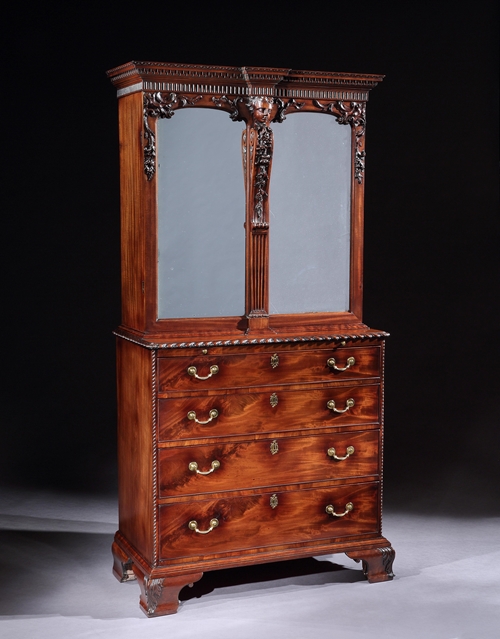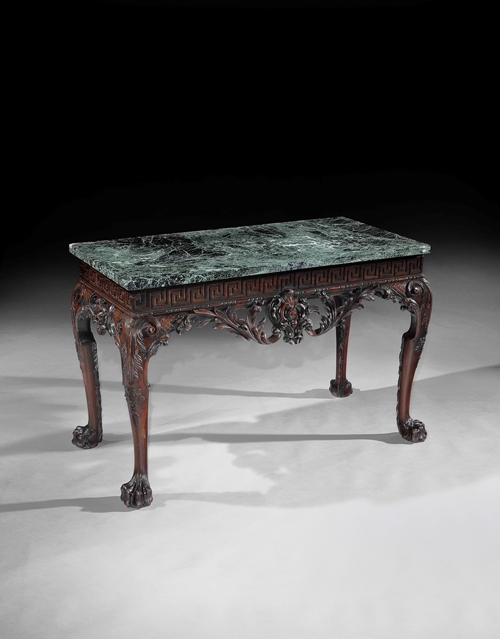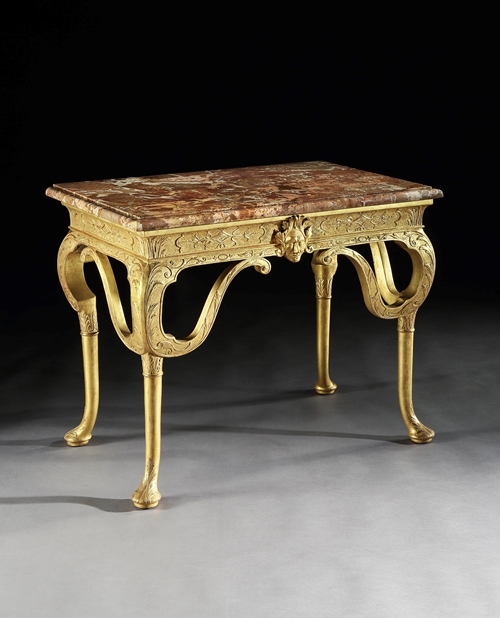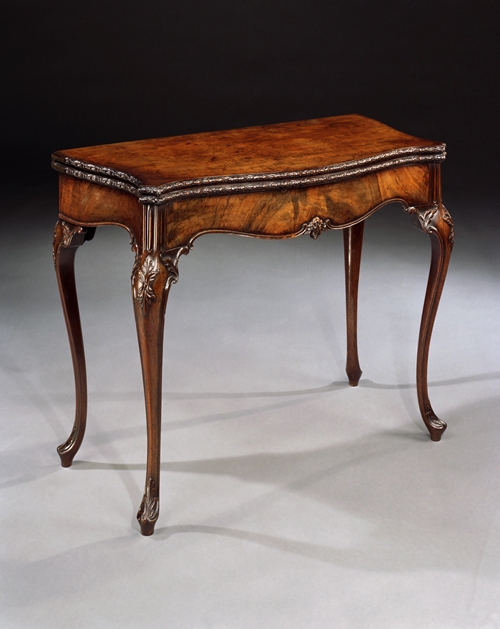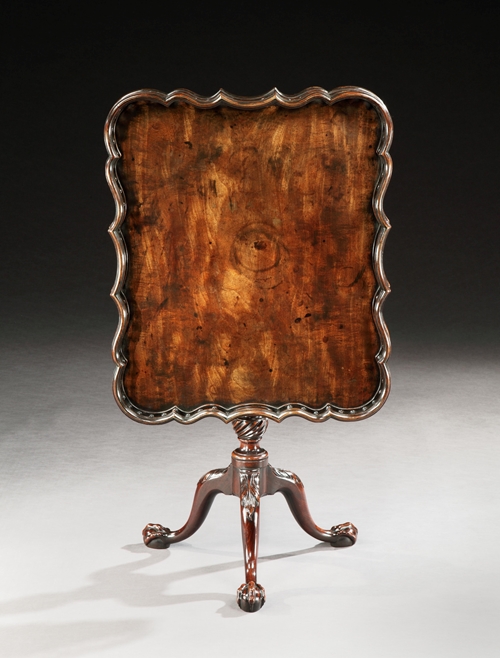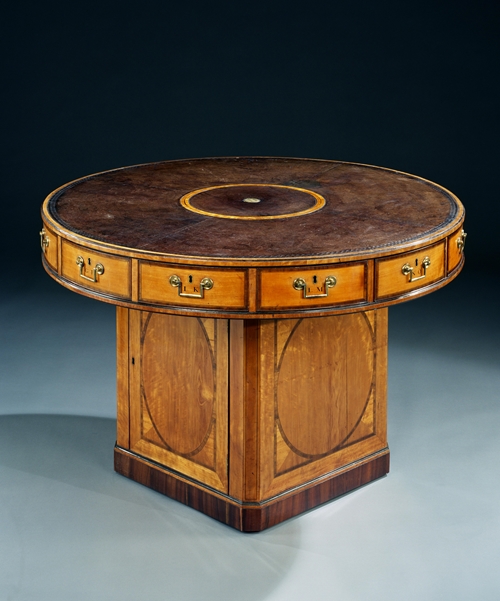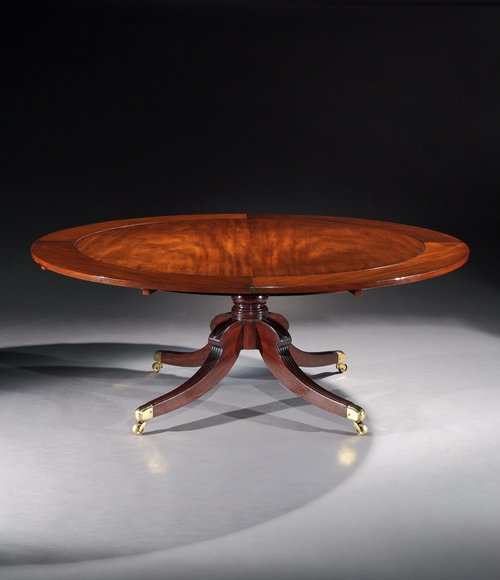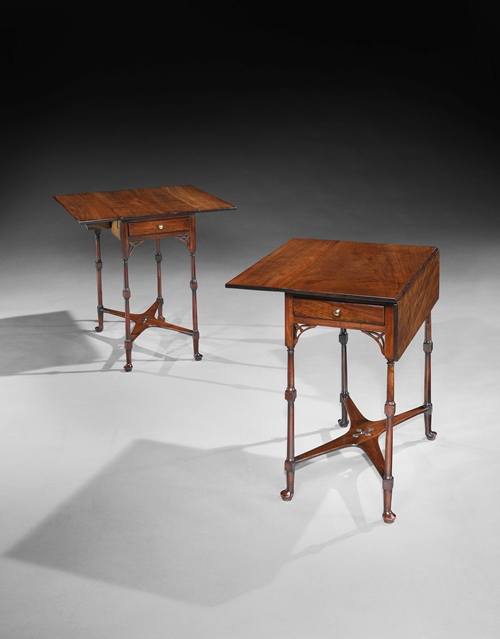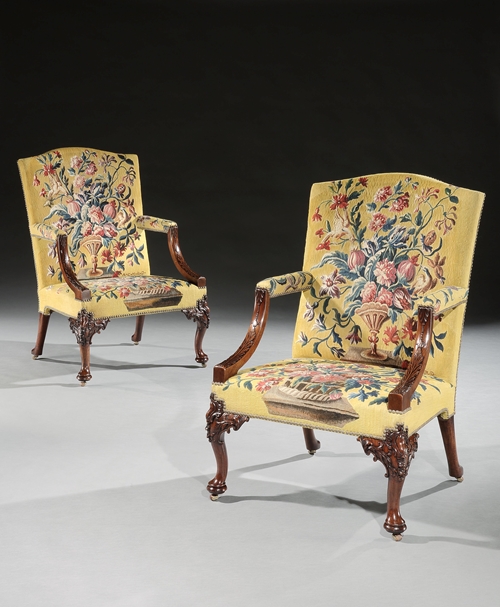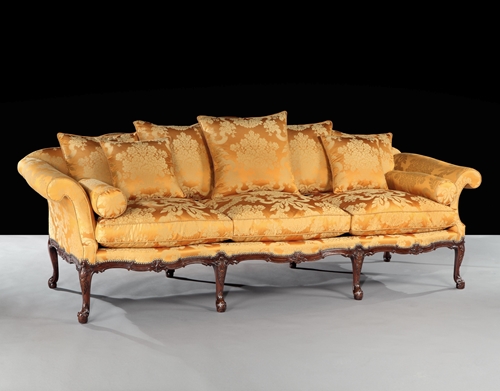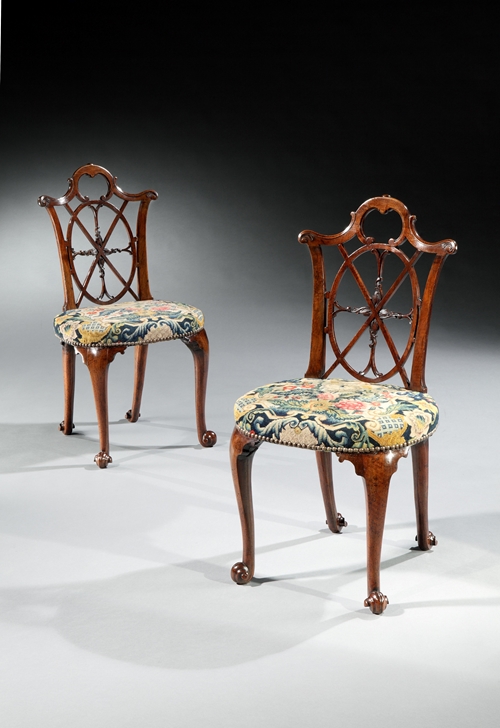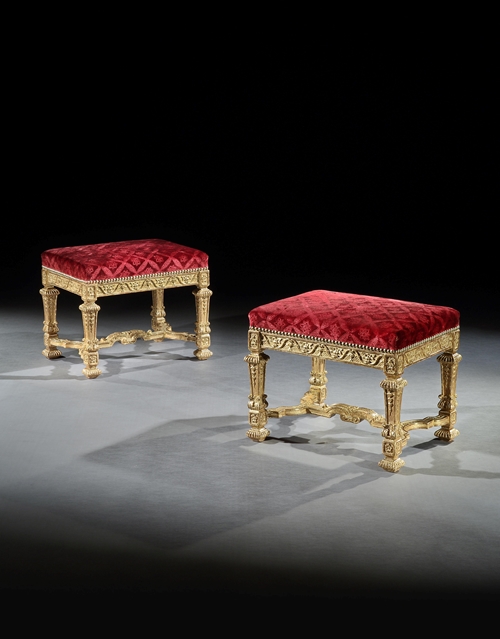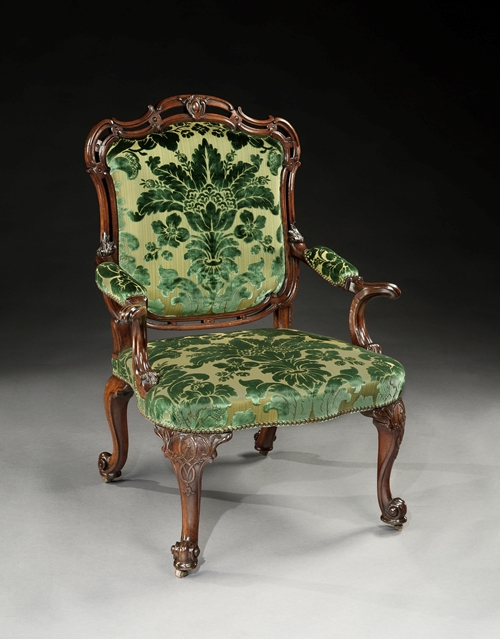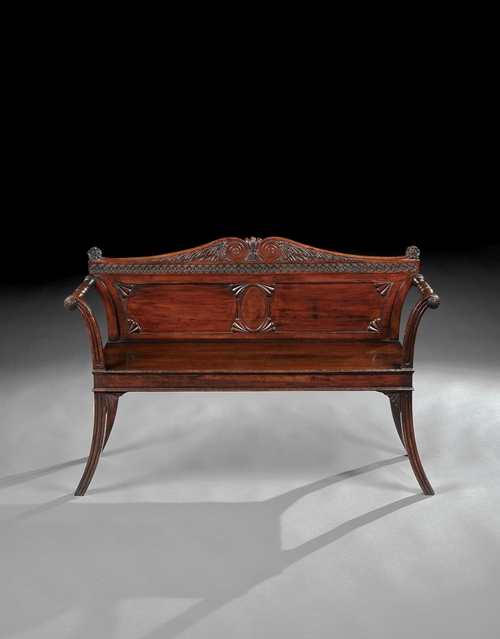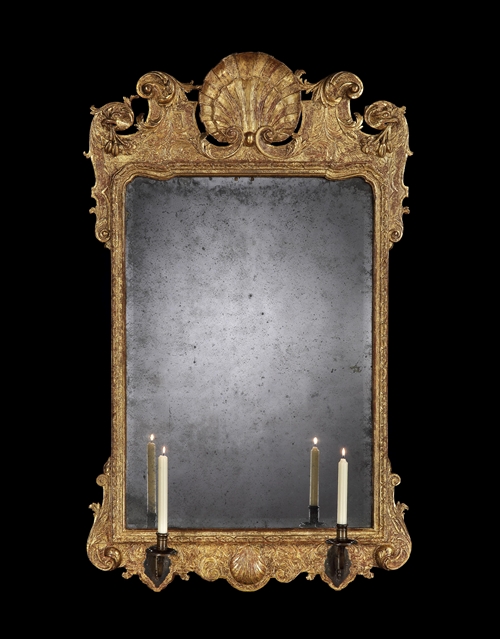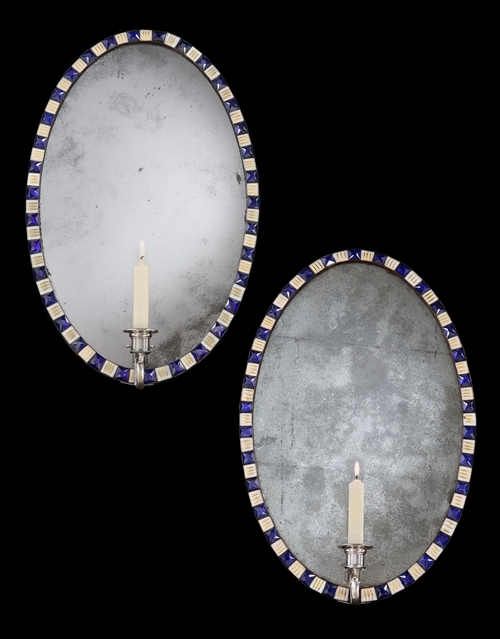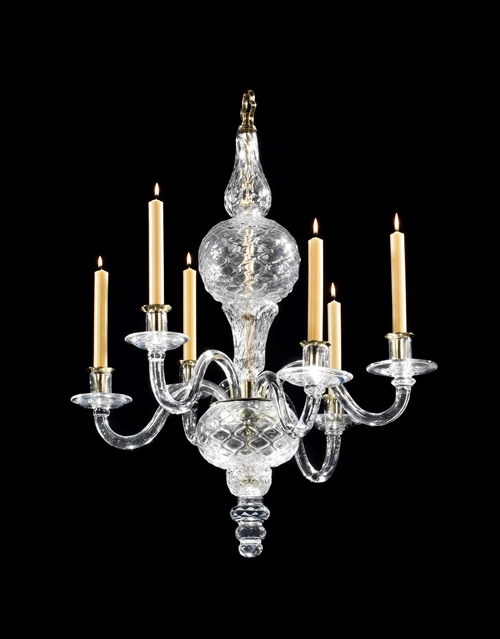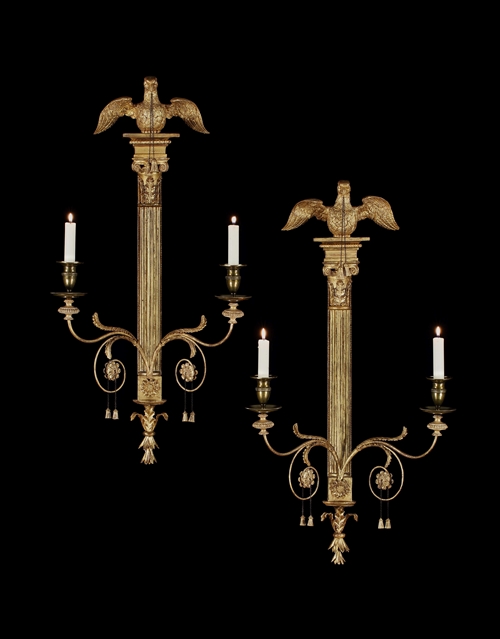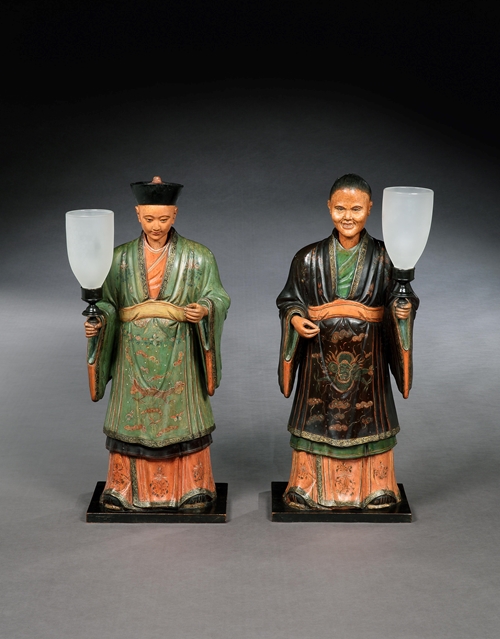A William and Mary scarlet and gilt japanned bureau cabinet.
Note: The cabinet retains four original ball feet with one later foot, the silvered finials, the original shaped and bevelled mirror plates, and all its original engraved brass handles and escutcheons. Some of the decoration has been refreshed. The top has remnants of an old Italian printed paper label. The backboard of the upper section is inscribed ‘B’ in black paint.
This cabinet belongs to a relatively small group of only six known examples, of which one has olive green japanning, one is blue and the rest are decorated with scarlet japanning, all with the unusual squared-off double dome top.
The first few pieces of lacquer furniture to arrive in England in the 17th century were imported by the East India Company, creating a taste for this exotic style. English cabinet-makers quickly adapted to the growing trend and decorated their work in similar fashion. Their success is shown by the export of English japanned furniture to other European countries such as Spain and Italy. Such export pieces were often adapted in style to cater to other countries’ fashions, and their decoration was generally denser than on contemporary examples for the English market.
The unusual scroll-applied double-domed cresting surmounted with five finials and the profusely shaped apron on this cabinet are reminiscent of early 18th century Italian cabinet work. The three-legged front is highly unusual and may be characteristic of this particular cabinet-maker. Remnants of an old Italian trade label on the top of the cabinet further suggest an Italian provenance.
A very similar cabinet veneered in walnut and formerly in the collection of the Earl of Coventry at Croome Court, Worcestershire, England, is without doubt by the same hand. That cabinet does not feature the scrolls on the cresting, nor does it have a shaped apron with extra foot in the middle; instead it conforms to the more restrained English taste. The quality of its craftsmanship, however, is equal to that of the japanned versions. It has not yet been possible to ascribe a specific maker to this small yet important group.
Literature:
Sotheby’s, sale catalogue, 26 October 1962, pp. 52-3, lot 184.
Adam Bowett, Early Georgian Furniture 1715-1740, 2009, p. 62.
Sotheby’s, ‘The Leverhulme Collection, Thornton Manor’, sale catalogue, 26-28 June 2001, pp. 326-32, lot 221.
-
Provenance
Anonymous sale, Sotheby’s, London, 26 January 1968, lot 92.
Mallett & Son Ltd., London, England.
Jeremy Ltd., London, England.
Private collection, Europe.
Looking for something similar? YOU MAY ALSO LIKE
YOU HAVE RECENTLY VIEWED ITEMS
Make an enquiry
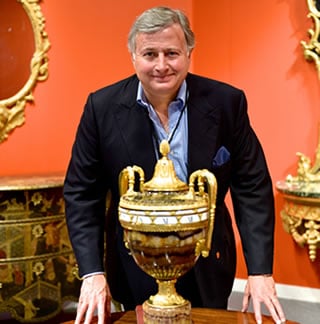
- CAN WE HELP YOU?
- +44 (0)20 7493 2341
- [email protected]
